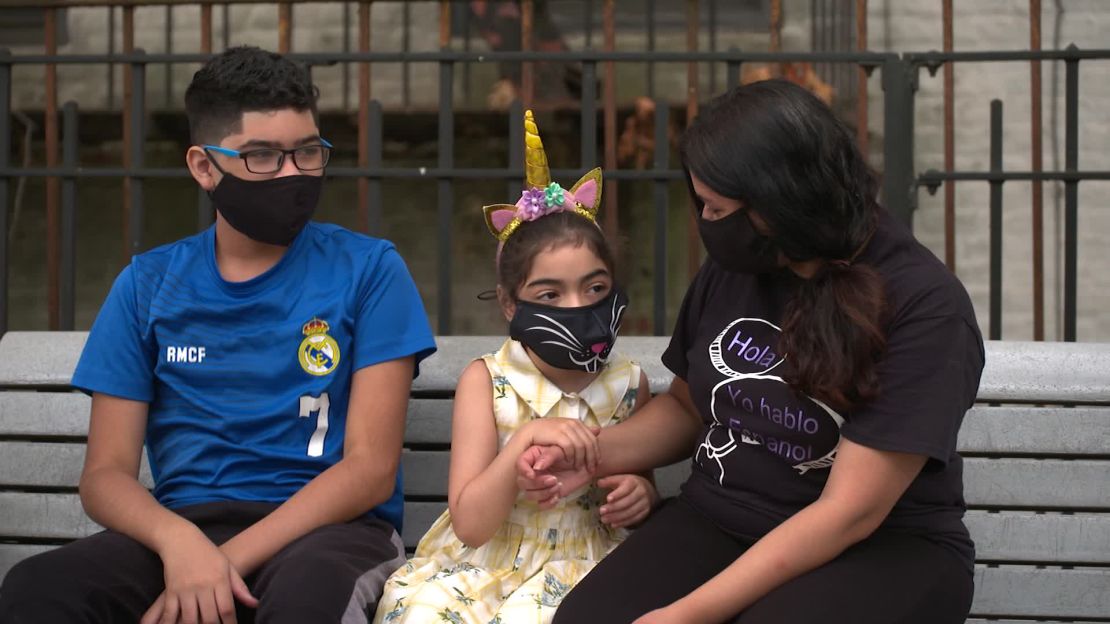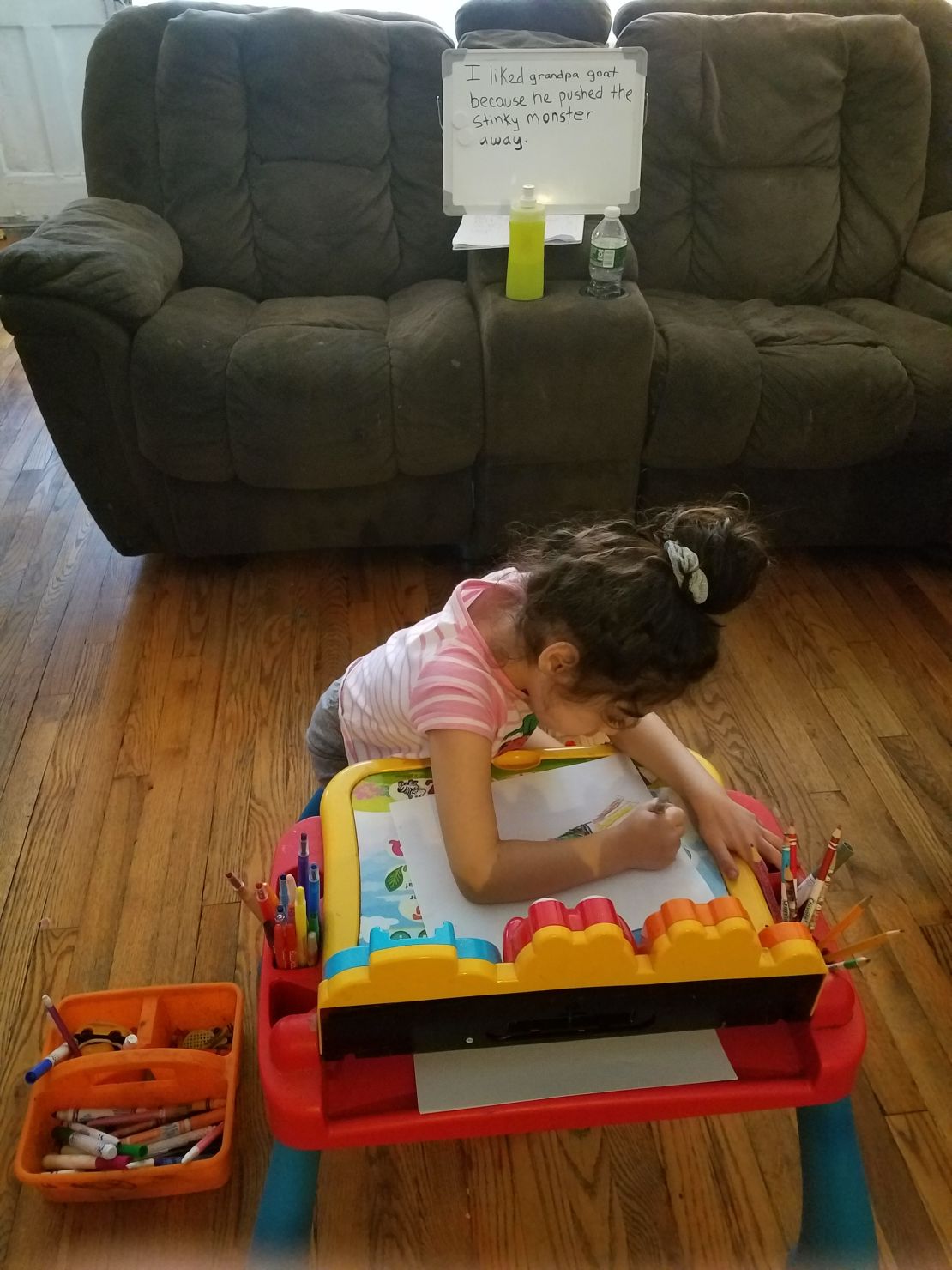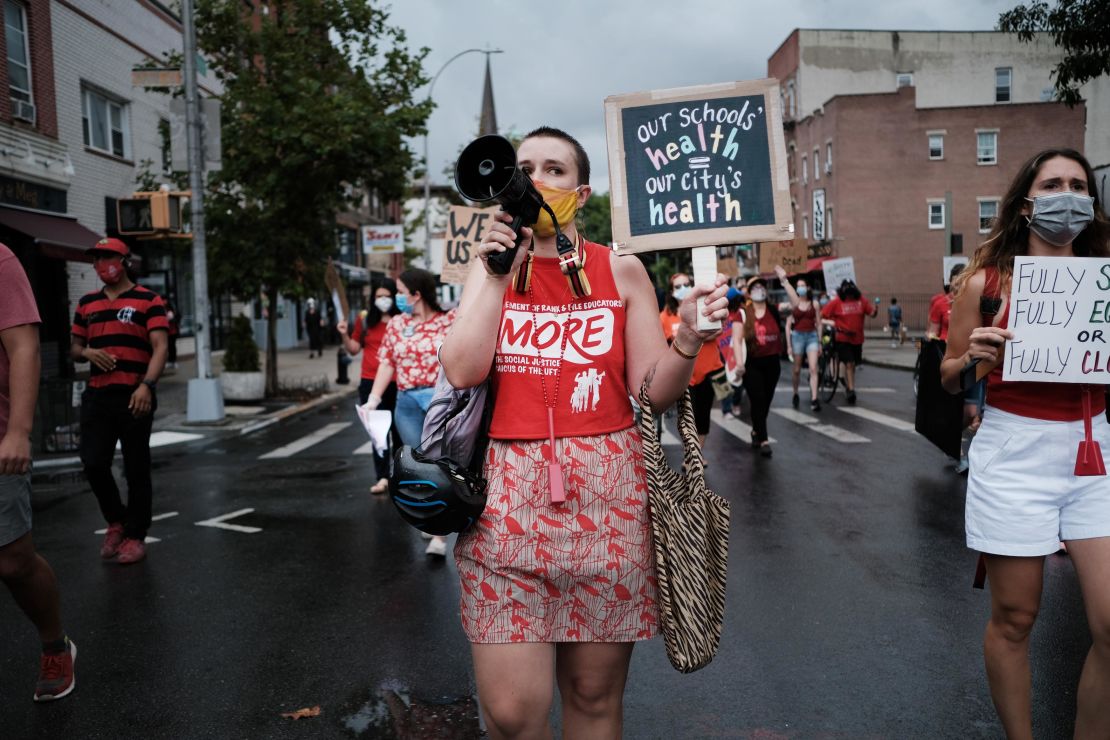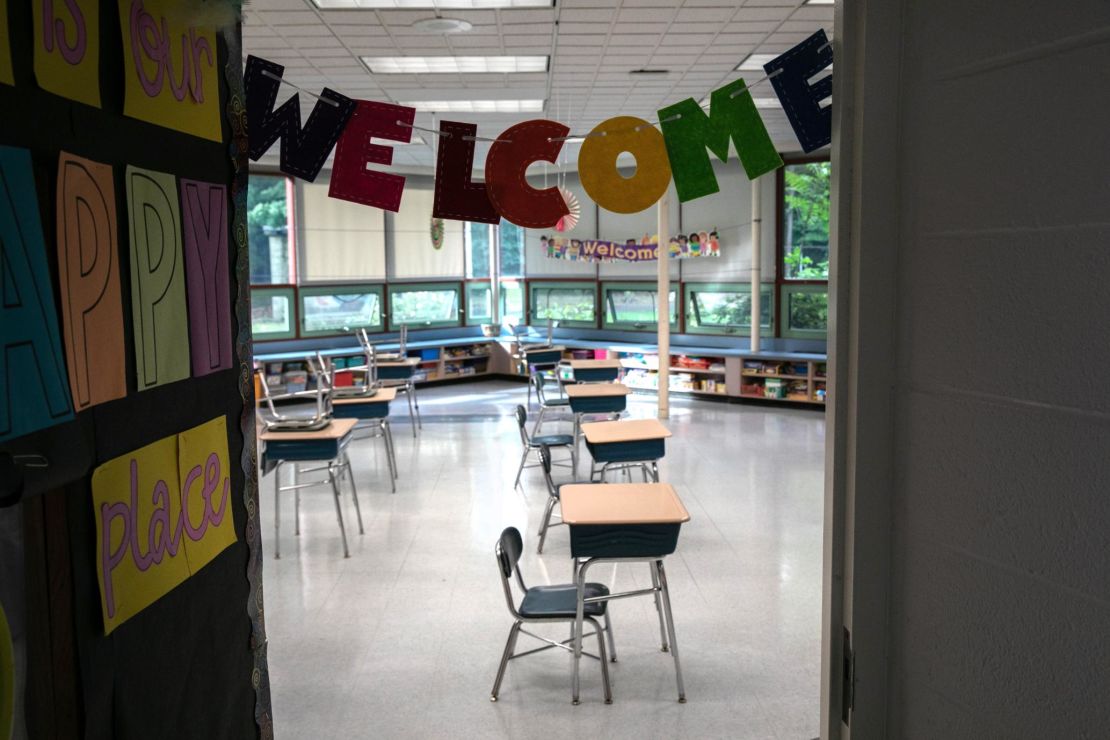Parents and students facing the new school year are finding themselves in much the same position as when classrooms abruptly closed in the spring to fend off the pandemic.
Two-thirds of the nation’s largest school districts are starting online – with all the stress and difficulties that brings for teachers, children and their families.
But even where in-person schooling is being offered, there are no easy answers.
A week before school doors were supposed to open, New York City, the largest school district in the country, pushed back the start of the semester in an agreement with teachers’ unions.

Finally getting back to the classroom is just what Karla Moncada and her two children in Brooklyn, New York, have been waiting for.
Her son, 13-year-old Kelvin Espinal, said: “If I’m at the schoolhouse from 8 a.m. to 2:20, I think I’m gonna learn more.”
His younger sister, 6-year-old Isabella Aybar, is more effusive: “I feel so happy that I want to explode.”
Map: Where schools are reopening
Moncada’s children struggled with online learning, and she thinks returning to school will be best for them emotionally and educationally.
“I have so much stress, getting my daughter to learn in the remote learning, and she cried, most of the time,” she said. “My son – he distracted himself by talking to his peers and playing on the computer.”
But health-wise, she is worried.

Moncada and her daughter both suffer from asthma. And Moncada had a possible case of Covid-19 this spring, when tests were scarce, and she says her asthma made recovery much harder.
“It was very scary. I thought I was gonna die,” she said. “I don’t wish that to anybody.”
But with both her children falling behind with their studies, they need to go back to school, she said.
“I don’t have a choice. I’m very aware that my daughter and I, we suffer from asthma. But it’s either try to get her into this education phase that is so essential, or just stay at home and do the same thing that we did last time where she was crying.”
More on kids, schools and coronavirus
There is a broad agreement that getting children back to school is best for everyone. But with no vaccine or effective treatment yet for the highly contagious coronavirus, teachers and parents are making hard decisions.
Emily Oster, an economist at Brown University, sums up the concerns. “School reopening is really important for our society. It’s not that I think that we should reopen at all costs, but I think that trying to do this safely in places where we can do it safely seems just really important for kids, for getting people back to work for the mental health of parents, for learning.”
Scientists are still researching how susceptible children of different ages are to Covid-19, and their role in transmitting it.
What health experts are saying about sending children to school
Where schools have reopened to in-person learning, there have been outbreaks of coronavirus infections. Thousands of students and teachers across five states have been forced into quarantine just weeks into the new academic year.

Teachers’ unions, such as those in New York, have been among those arguing against a precipitous return.
Nearly 1.5 million teachers – about 24% of the nation’s cohort – are at higher risk of becoming seriously ill from coronavirus because of their age or health conditions, the Kaiser Family Foundation reported in July.
Becky Pringle, president of the National Education Association that represents 3 million educators, is blunt.
“We cannot open our school buildings unless it is safe,” she said.

Along with one-way hallways, spaced-out desks facing the same direction and masks, many schools also plan temperature checks and other measures – all of which cost money. And school nurses have said they are worried that there won’t be enough protective equipment for them.
For all that has been learned about the disease this year, answers for how to get children back to school safely and quickly are still elusive.
Karla Moncada knows there are no easy choices in a pandemic.
But she will be packing school bags in her Flatbush home and sending her children to class this month.
“I will try this. Let’s see how this works,” she said.
CNN’s Sarah Jorgensen contributed to this story.

